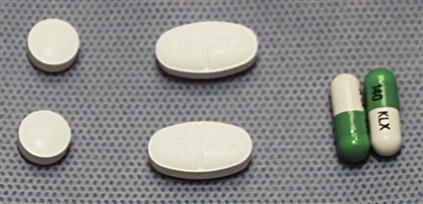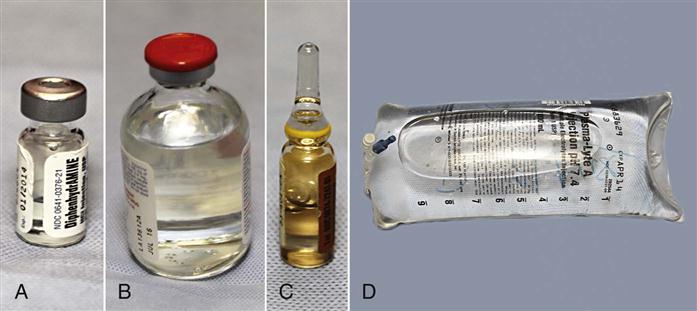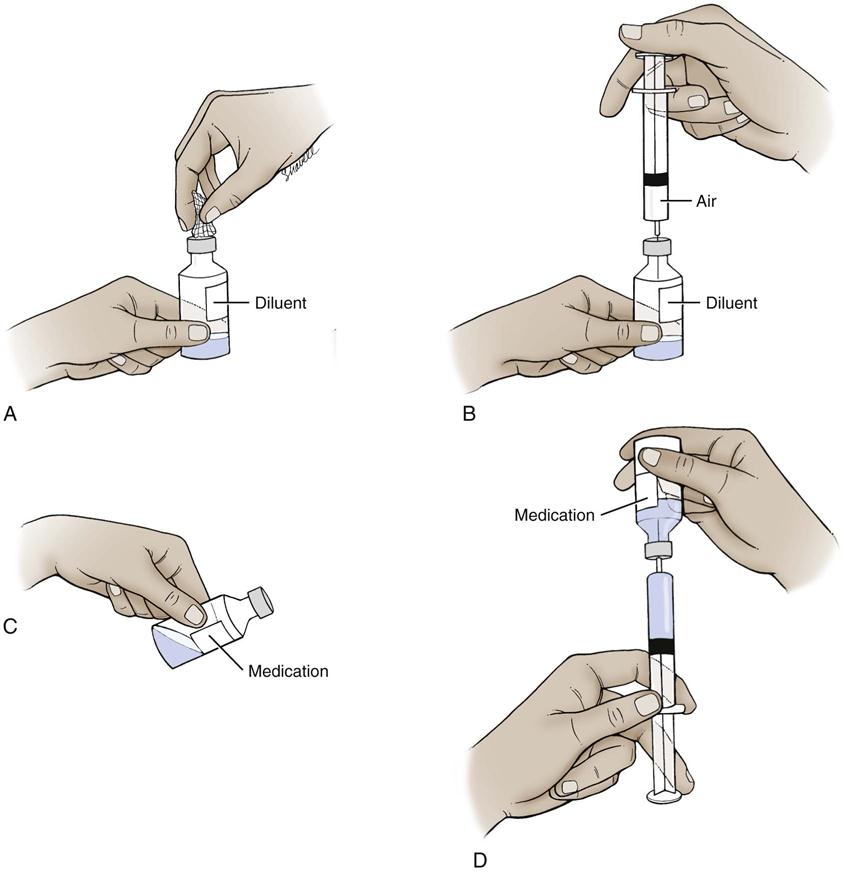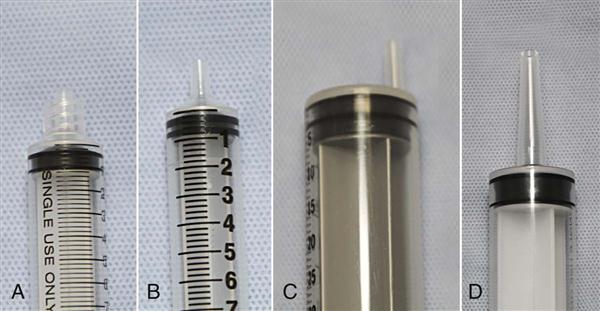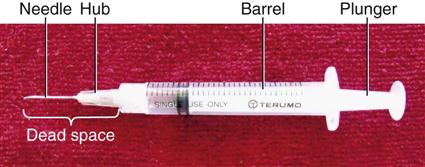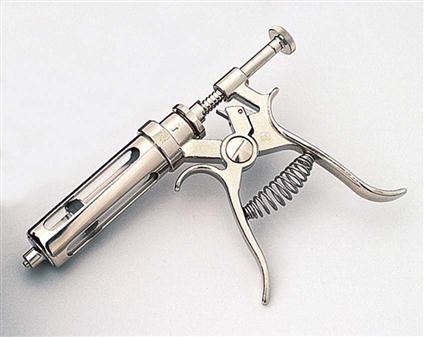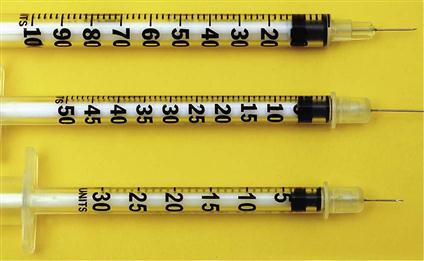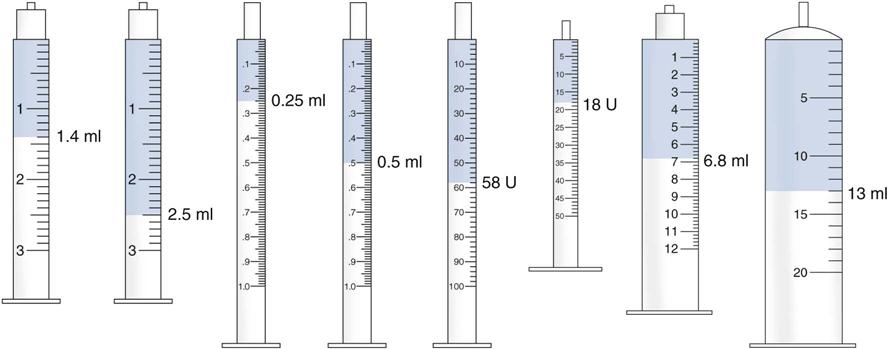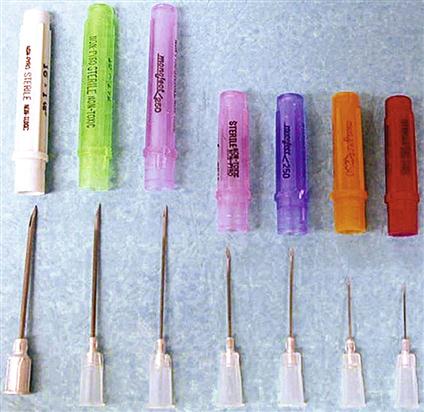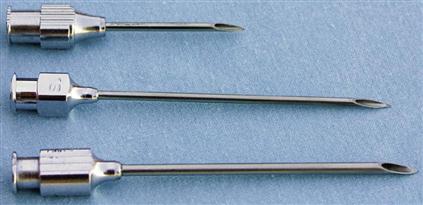Routes and Techniques of Drug Administration
Learning Objectives
After studying this chapter, you should be able to
1. Discuss the many types of available drug forms.
2. List and explain the six rights of administering medication.
3. Name available types of syringes and needles, and describe their common uses.
4. Correctly read doses in a syringe.
7. Describe proper labeling of dispensed medications.
Key Terms
Cerumen
Counterirritant
Cream
Elixir
Emulsion
Liniment
Ointment
Parenteral administration
Speculum
Suspension
Introduction
In a busy veterinary practice, a veterinary technician often administers treatments ordered by the veterinarian. Proper administration techniques should be used along with accurate documentation on the medical record. Additionally, a veterinary technician must be knowledgeable about dosage forms, syringe construction, and hatch marks and must be able to draw correct amounts of medication within a syringe, know the six rights of drug administration, be capable of administering medication by all available routes, be knowledgeable in the area of client education regarding drugs, and know how to properly handle controlled substances. Proper documentation of administered treatments is of utmost importance and ensures that the same treatment is not repeated by other veterinary personnel. Knowledge of adverse reactions that animals may have to particular medications is also crucial. The veterinary technician is the veterinarian’s most important employee in a busy practice. Through observation of the patient during treatments, the technician is able to provide the veterinarian with information regarding the patient’s response. The doctor, thus informed, can easily reach decisions regarding adjustment of the treatment regimen. The technician who recognizes the importance of administering proper treatment to the patient and who uses observation skills in assessing patient response to that treatment is an invaluable asset to the practice.
Dosage Forms
Pharmaceutic companies manufacture drugs in various forms. Some drugs are available in a variety of forms; others may be available for administration in only one form. Most pharmaceutic companies endeavor to provide comfort to the patient and ensure ease of administration when formulating their drugs. Some common drug preparations may be administered orally, parenterally, through inhalation, intrarectally, and topically. The most common type of preparation is an oral medication. Oral preparations are usually easy to administer, have extended expiration dates, and are manufactured uniformly with respect to the content of the drug.
Tablets are the most commonly used oral form (Figure 2-1). A tablet may be scored or unscored. A scored tablet has indentions that have been made into its surface, allowing it to be broken into halves or quarters. Therefore, a scored tablet provides a way of administering a smaller dose to the patient. A tablet that is unscored may be cut into a smaller size with the use of a pill cutter device. However, scored tablets break more readily and are less likely to fragment. Some tablets whose drug type may be irritating to the gastrointestinal tract may be enteric-coated. Capsules are containers that house medication. The capsule itself may be made of gelatin and glycerin. The contents of a capsule may be in powder or liquid form. Capsules may be advantageous to use because they allow a patient to be treated without an unpalatable taste coming into contact with the oral mucosa. Unfortunately, capsules cannot be broken down the way a scored tablet can to provide a smaller dose. Boluses are large rectangular tablets that may be scored or unscored. Boluses are used in the treatment of large animals (e.g., cattle, horses, sheep). Boluses usually are administered to bovines with the aid of a special instrument called a balling gun.
Liquid preparations for oral administration may be purchased in several different forms (e.g., mixtures, emulsions, syrups, or elixirs). Mixtures consist of aqueous solutions (i.e., water) and suspensions for oral administration. A suspension usually separates after long periods of shelf life and must be shaken well before it is used so that a uniform dose is provided. Syrups contain the drug and a flavoring in a concentrated solution of sugar water or other aqueous liquid. In veterinary medicine, an antibiotic (e.g., doxycycline) may be mixed with a liquid vitamin (e.g., Lixotinic) to ensure a more palatable taste for the patient. Elixirs usually consist of a hydroalcoholic liquid that contains sweeteners, flavoring, and a medicinal agent. Emulsions consist of oily substances dispersed in an aqueous medium with an additive that stabilizes the mixture. All liquid oral medications should be administered slowly to allow the patient to swallow before more liquid is given. Rapid administration of oral medication can result in aspiration into the lungs, thereby causing pulmonary problems.
Two forms of parenteral injection that are available are injections and implants. Injections are available as single-dose vials, multidose vials, ampules, or large-volume bottles that may be used to administer intravenous (IV) infusions (Figure 2-2). A vial is a bottle that is sealed with a rubber diaphragm. A vial may contain a single dose or multiple doses. A single-dose vial must be discarded after one use (dose). Multidose vials usually contain preservatives that enable them to have a longer shelf life; thus they may be used for more than one dose. Ampules contain a single dose of medication in a small glass container with a thin neck, which is usually scored so that it can be snapped off easily. Some drugs may be unstable in solution and may require reconstitution with sterile water or another diluent; these may be used immediately for injection (Procedure 2-1).
Syringes and needles are used for parenteral administration of drugs (Box 2-1). This equipment must be sterile. Drugs should never be stored in syringes for a long time before administration occurs because some drugs may be absorbed into the plastic makeup of the syringe, resulting in an inadequate dose or inactivation of vaccines.
Implants are very hard sterile pellets that contain a chemical or a hormonal agent. Implants are inserted subcutaneously and are absorbed by the body over an extended time. Growth hormones are commonly manufactured in this form for use in cattle and are implanted in the subcutaneous dorsal aspect of the ear.
Topical medications are available in several forms. Liniments are medicinal preparations for use on the skin as a counterirritant or to relieve pain. Lotions are liquid suspensions or solutions with soothing substances that may be applied to the skin. An ointment is a semisolid preparation of oil and water, plus a medicinal agent. The water in an ointment evaporates after application and leaves the drug behind on the skin’s surface. Dusting powders (e.g., flea powder) are mixtures of drugs in powder form for topical application. Additionally, powders may have adsorbent (cornstarch) or lubricant (talcum) properties. Aerosols are drugs that have been incorporated into a suitable solvent and packaged under pressure with a propellant. Dusting powders and aerosols are common forms for some topical insecticides and wound dressings.
Microencapsulation is a drug form that stabilizes substances commonly considered unstable. Microencapsulation also may be used for drugs intended to be released slowly over a period of time (e.g., moxidectin [ProHeart injection]). When the drug’s active ingredients are microencapsulated, a protective environment is formed against harmful substances and the stability of the product is improved. Microencapsulation completely masks the flavor of a drug and allows oral treatments to be administered with greater ease because the patient is unable to taste or smell the ingredients.
Drug Preservatives and Solvents
In addition to the active ingredient, many drugs contain organic or inorganic agents as additives or pharmaceutic aids. These inactive (or inert) ingredients facilitate tablet administration, improve solubility, or increase stability. Although the quantity of inert ingredients is usually small, these ingredients can cause adverse effects, or a patient may be sensitive to or may smell the ingredients.
Parenterally administered drugs often contain chemical preservatives that are used to prevent destruction and loss of potency through oxidation or hydrolysis. The amount of preservative in the formulation of parenterally administered drugs is an optimal concentration, and the reconstituted medication should be used immediately to prevent the possibility of fungal or bacterial growth. Dilution of the drug reduces the effectiveness of the preservatives. Most drugs are water soluble, although some may need additives to increase solubility. Glycols are one example of additives used to increase solubility. Generally, propylene glycol and polyethylene glycols are preferred.
Drug Administration
A veterinarian initiates administration of drugs for therapeutic purposes. (It is unlawful for a veterinary technician to prescribe drugs for an animal patient.) The role of the technician is to administer drugs to the patient on the order of a veterinarian. When doing this, a technician must always follow the six rights:
By following these rules, a technician will efficiently and effectively medicate a patient.
Oral Medications
The most common forms of drug therapy are tablets and capsules. These are easily administered (Procedure 2-2) and are sometimes used in conjunction with other drug forms.
Stay updated, free articles. Join our Telegram channel

Full access? Get Clinical Tree


